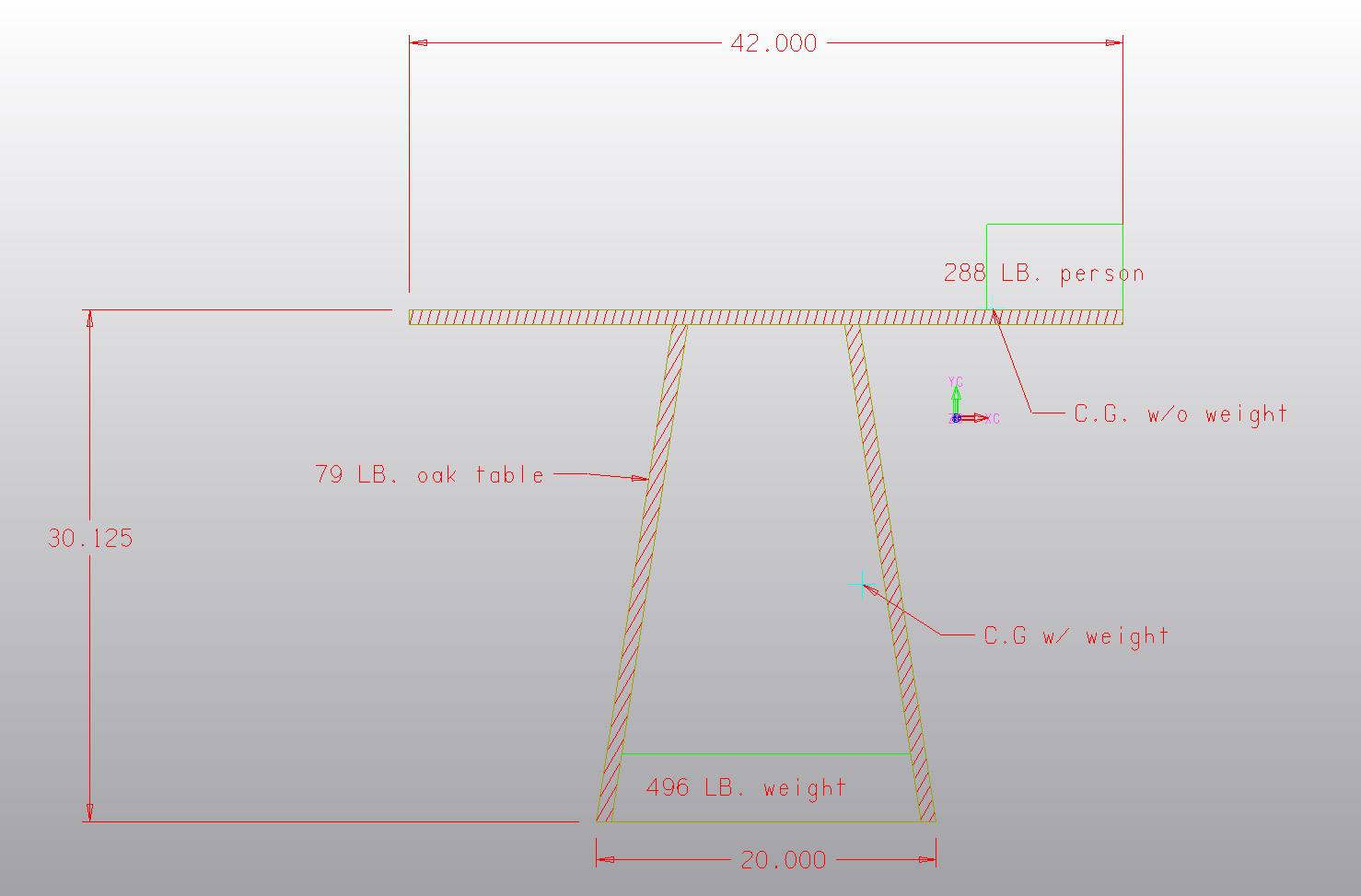If a 288 lb person decided to sit on the edge of that 42" table, he will get exactly what he deserves, a lesson in respecting objects. People are not completely stupid - or at least we cannot design for total Idiocracy.
If someone - anyone - sees a large farm type table with four stout legs and substantial aprons and a thick top, they may be tempted to lean against it - or perhaps even sit on it. They read it as able to withstand that 'use'.
If they see a 42" round table, even with that monstrous base, they read it as lighter and more fragile, and would not sit on it. This is pretty basic stuff, I know. But if they do not understand that, it is not your responsibility to design for their lack of common sense.
Beyond that, it is all about form vs function, with the sense of an artist. The 11" overhangs on the drawn table are knee knockers, not enough room for comfortable sitting - OK for casual use.
What is wrong with following historical precedent? Has not all this been worked out before? You don't need to have 18th century details to see that the designs of a Hepplewhite double pedestal table will solve many of the goals of table stability, appearance of stability, and leg/foot room.
